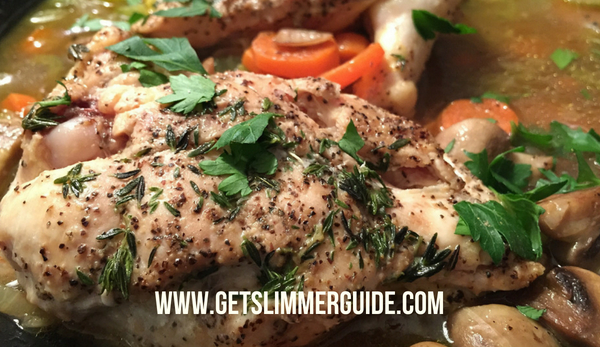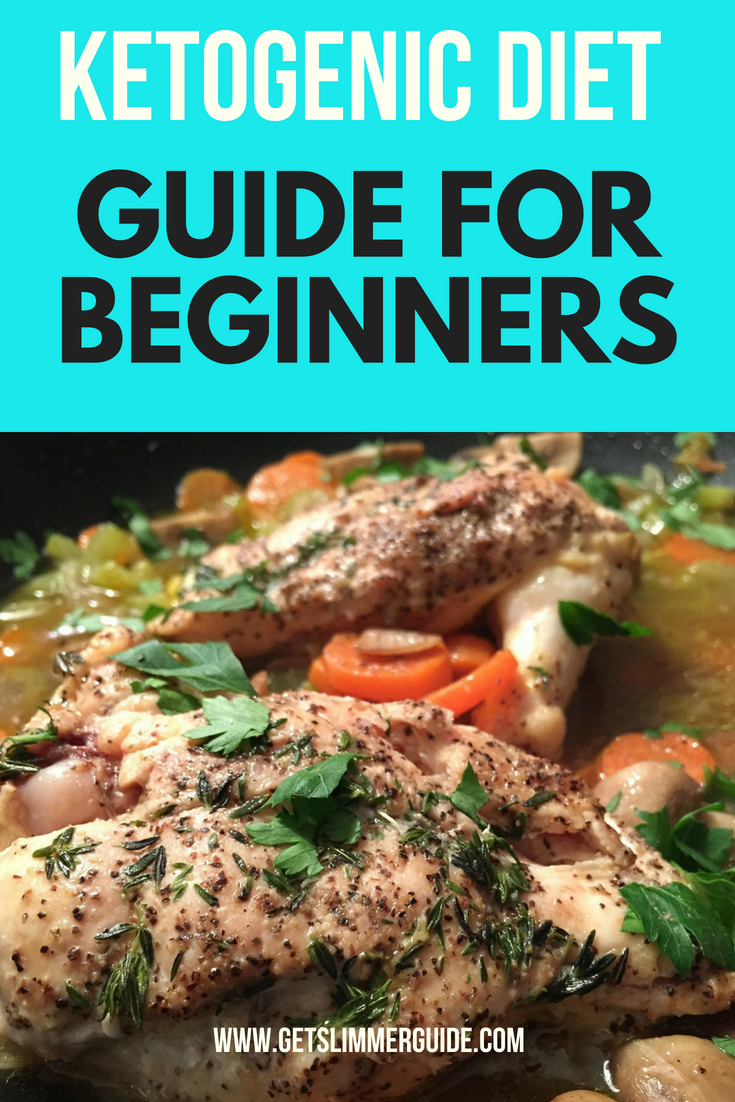Ultimate Guide to Ketogenic Diet for Beginners: Keto 101!
If you are looking to start the ketogenic diet, then you will find this post on keto diet for beginners very helpful. This is because it will provide you with all the vital information you need to get started on the right footing.

I guess you must have heard about the incredible results people have achieved by doing the Ketogenic diet.
Not only does it aid in weight loss, but it also helps you gain muscle mass and improves your overall wellbeing.
I found that going keto is one of the best things to do if you want to see results in your weight loss journey. At least it was for me and I’m happier for it!
However, there are certain things you need to know keto before you can have success with it. So keep reading to find out.
What is the Ketogenic Diet?
Ketogenic diet popularly called “keto” is a high fat, moderate protein and low carb diet.
The goal is to starve your body of carbohydrates, forcing it to go into ketosis.
When you restrict your carbs intake, there will be no sugar to burn, so your body will be forced to burn the stored fats in your body to produce energy.
This is the “ketosis state” which the keto diet aims to achieve.
Oh, yes I know, you are probably wondering how eating more fats can help YOU burn fat and lose weight!
When it comes to weight loss, the problem is NOT fat, but sugar. I mean the GOOD FATS. When you consume a lot of carbs, your body stores the excess as fat.
On the other hand, the good fats help to turn your body into a fat burning machine. Sounds weird, doesn’t it? This book explains why.
Ketosis
You have heard the word “ketosis” a lot, but what is it? Ketosis is a metabolic process that occurs in your body to help keep it functioning.
If your body lacks enough carbs, your cells will begin to burn fats for energy. During this process, your body produces ketones, which it uses as fuel.
Related: How to Know You are in Ketosis
Benefits of Ketogenic Diet
Even though the keto diet was developed to help treat epilepsy, it was later discovered to have many other health benefits including aiding in weight loss.
Some of the benefits include the following:
Weight Loss
Weight loss is basically the most common reason people do keto today. And you don’t need to do rigorous exercise to get results. In fact, restricting your carbs intake is one of the best ways to achieve quick weight loss.
Appetite Control
Truth be told, one of the major culprits behind weight gain or the inability to lose weight is the inability to control appetite, which makes you eat more than your body really needs. By curbing your appetite, keto helps you eat less and lose weight.
Reduces Visceral Fat
Have you noticed that your abdomen tends to store more fats than other parts of the body? That is called visceral fat.
Visceral fat is dangerous as it lodges around organs. It can also lead to insulin resistance and other metabolic dysfunctions.
Low carb diet helps to reduce abdominal fat, reducing your risks of diseases such as type 2 diabetes, heart disease, hypertension and cancer.
Increases Good Cholesterol (HDL) Levels
HDL stands for High-density lipoprotein – the good cholesterol. Most often, we tend to focus on how to reduce bad cholesterol (LDL) without thinking of how to increase the HDL. Truth is, increasing our HDL is as important as (if not more important than) reducing the LDL.
Good news is, keto diet helps to increase your HDL level, thereby lowering your risks of heart disease.
Lowers Blood Sugar Levels
When you eat carbs, they are broken down into glucose, which enters the bloodstream and spikes your blood sugar levels. Low carb diets help to solve that problem.
Kills Cancer Cells
Cancer cells feed on sugar, so by starving your body of carbs, you are inherently cutting off food supply to the cancer cells.
How is Keto Different than other Low Carb Diets
While other low carb diets like Atkins and Ducan work in phases, keto does not. On keto, you have to continue with the low carb, moderate protein and high fat until you reach your goal. There is NO maintenance phase!
Keto diet limits about 50g of carbohydrates per day.
Keto Macros
The term Macro stands for macronutrients – the molecules your body needs to produce energy and function properly. The macros include carbohydrates, fats, and proteins. Keto requires that you get most of your calories from good fats, followed by proteins and just a minimal amount from carbs.
Below is the break down of your keto macros:
- 70-75% of your calories from fats
- 20-25% from proteins
- 5-10% from carbohydrates (net carbs)
Tracking Macros
Keto demands that you eat 70-75% fats, and 20-25% proteins and 5-10% carbs.
When you find out exactly what quantity of foods (in grams) you are supposed to eat a day, then you need to track it.
Tracking your macros helps to ensure that you stay within the limit. And you need to measure all your foods in a very precise way.
You can use this Kitrics Digital Nutrition Scale. It measures calories, calories from fat, carbohydrates, protein, fat, saturated fat, fiber, sugars, cholesterol, and sodium.
There are also free apps like my fitness pal you can utilize for tracking.
What is Net Carb?
Net carbs = total carbohydrates minus fiber. Your body cannot break down fiber into glucose. That is the reason it doesn’t count towards your daily carb intake.
What to Expect When You go on Keto Diet (Side Effects)
Before beginning this journey, you should be ready for the changes your body may experience during the transition process as you go into ketosis.
Your body goes through a shock as it transitions from burning carbohydrates to burning fats.
While these changes may be undesirable, they are not so severe or unbearable and are usually short-lived.
Note that different people have different experiences. But, it generally feels like you are coming down with the flu, hence the term “keto flu”.
Keto Flu
Keto flu has nothing to do with the normal flu even though you may experience similar symptoms.
Like I mentioned before, it is your body reacting or adjusting to the new low cab and high fats diet.
It is normal to experience this, and its symptoms include:
- Hunger
- Fatigue
- Headache
- Anxiety
- Dizziness
- Excessive thirst
- Sweating chills
How to Combat Keto Flu
Some of the ways to combat keto flu symptoms include:
- Drink a lot of water to replenish the fluid you are losing.
- Add salt to your water to replenish electrolytes you lose through your urine (I prefer Himalayan salt because they have all the vital minerals you need). This will help alleviate the fatigue.
- You can also relieve the side effects by taking supplements.
Related: Keto Flu – Symptoms and Remedies
How to Prepare for Ketogenic Diet
When you choose to do keto, you need to prepare yourself both mentally and practically. Consider the following steps before commencing on this exciting journey.
Find out What You Need to Eat
Since keto is about diet, have in mind that carbs will be limited. Check out this keto food list to help you know what you are allowed to eat.
Improve Your Cooking Skills
You will realize that most of the foods recommended for keto may not be what you are used to cooking. And you will be doing a lot of cooking yourself instead of eating out.
Inform Your Family
Don’t begin keto without letting your family know. Explain to them why you will not be able to eat the same diet with them during to prepare them for your new meal plan
Get Keto Strips
Get keto strips – you will need them for testing your urine for ketones. The presence of ketones in your urine means that you are in ketosis.
Related: How to Achieve Ketosis Fast
What to Eat on Keto Diet
Meat
Consider opting for organic unprocessed meat because they have no additives or harmful chemicals (antibiotics and hormones).
- Pork
- Bison
- Beef
- Lamb
- Moose
- Elk
- Veal
Natural Fats
You are on keto diet because you need healthy fats to provide energy to your body. Consider fats from:
- Palm oil
- Olive oil
- Coconut oil
- Ghee
- Butter
- Bacon fat
- Lard
- Avocado oil
- Macadamia nut
Eggs
Low Carb Vegetables
Consider eating above the ground vegetables like:
- Zucchini
- Broccoli
- Avocado
- Cabbage
- Eggplant
- Cucumber
- Green beans
- Chard
- Cauliflower
- Garlic
What to Avoid on Keto
When you go keto, you are trying to reduce your carbs intake. Wondering what foods could get you out of keto after starting this fantastic journey. Here are some of them:
Normal Milk
The problem with the normal milk is that it contains high amounts of sugar you do not need.
Tropical Fruits
As much as tropical fruits are healthy, they contain high levels of sugar. Examples of these fruits include:
- Mangoes
- Bananas
- Pineapples
- Papayas
- Oranges
- Kiwi
- Grapes
Grains
Grains contain a lot of carbs, so stay away from them.
- Rice
- Oats
- Quinoa
- Barley
- Sorghum
- Amaranth
- Millet
- Bulgur
- Corn
Potatoes
Potatoes are quite starchy, and you can replace them with leafy greens, broccoli, and cabbage
Processed Foods
Believe it or not, processed foods are NOT your friends if you want to go keto. Some like hotdogs contain high levels of proteins (you need protein in moderation), while others contain high levels of sugar.
Dried Fruits
Ditch dried fruits because they contain high amounts of carbs.
Pasta and Noodles
You might want to go for Keto friendly option such as veggie noodles.
Soda and Alcohol
Soda and alcohol are choked full of sugar, so do yourself a favour and avoid them.
Other Foods to Avoid While on Ketogenic Diet
- Bread
- Pancakes
- Pastries
Yes, the ketogenic diet can help you lose weight, but you need to commit to it. Eat the right foods and avoid foods that will push you off the wagon (ketosis).
I hope you found this detailed keto diet guide for beginners quite helpful. Feel free to share your feedback in the comment section below.

Thank you for all the info condensed to the points. I have been working up to my start day (today). My daughter not only went from a size 12 to an XS but she went from non athletic to working out daily. She committed to Keto to this info and list really help. Thanks
Hi DeeAnn,
I’m happy to hear that you found the info on Ketogenic Diet for Beginners helpful. Wishing you best of luck as you embark on this journey.